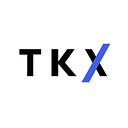Breakthrough DeFi Options: Zomma Protocol | TKX Weekly
by @Guaaronnnn
editor @FriedWagyuu
DeFi options have garnered attention in both the DeFi and CeFi communities as the next untapped financial primitive. Though several DeFi options have received funding, none have reached the breakout success of DeFi spot or perpetual products. However, the evolving landscape of DeFi options hints at their potential to reshape the future of finance. In this article, we explore the DeFi options protocol — Zomma Protocol, which could potentially be a breakthrough compared to others.
Intro
Zomma Protocol introduces European options trading on blockchain networks, combining the diversity and non-linearity of traditional finance (TradFi) options with the dynamic landscape of decentralized finance (DeFi). With its feature-complete platform, Zomma Protocol presents a compelling solution that caters to the needs of both traditional and DeFi traders, bridging the gap between these two worlds.
Mechanism
Zomma Protocol enables traders to buy and sell options tailored to their preferences, such as expiration dates, cryptocurrencies, strike prices, and sizes. Quotations are provided through adjusted oracle pricing, and trades are settled on-chain via smart contracts. Traders can set an acceptable slippage range, with failed transactions resulting in only the gas fee being forfeited. Liquidity pools accumulate available liquidity, prioritizing counter-positions or offsetting positions. Traders must maintain a sufficient balance when selling options for smooth transactions.
Health Factor
Zomma Protocol introduces the Health Factor (HF), a risk indicator derived from traditional finance. Calculated as: Total Equity / (Initial Margin + Total Theoretical Value of Buy Positions + Total Theoretical Value of Sell Positions)
A higher HF indicates safety, while an HF below 1 signifies increased risk. If the HF falls below 1, forced liquidation may occur for both traders and pools. The HF serves as a vital risk indicator within the system.
Pricing
Zomma Protocol uses the Heston Model calibration (model of evolution volatility) to create a smooth price curve from scattered option prices from different CEX and DEX. If the implied volatility is significantly different, Zomma uses the Wing Model to calculate. The protocol also considers available liquidity as an additional factor, using the Black-Scholes Model to create implied volatility and adjust the final price. The price is also adjusted based on the utilization rate of each pool to make sure the quotes are competitive. To reduce the load on-chain calculations, Zomma uses an on-chain pricing map that is regularly updated with important parameters, including implied volatility. The price is further adjusted based on the utilization rate of the pools.
Zomma’s pricing mechanism is key to offering options with different strike prices and expiration dates. This provides users with an experience closer to traditional finance.
Multiple Liquidity Pools
Zomma Protocol introduces multiple liquidity pools, known as Makers, allowing users to choose pools based on their trading preferences. Unlike protocols with a single pool, Zomma pools offer diverse options and enable users to trade as both makers and takers, while effectively segregating risks. Liquidity providers can add liquidity to specific pools, which have unique Net Asset Values (NAVs) that change over time based on underlying asset prices. The available liquidity across different pools accumulates to quote in response to traders, with positions shared proportionately across the pools.
The pools, ranging from conservative to aggressive, allocate different proportions of liquidity for quotes and reserve the rest. Conservative pools have lower risk with 30% liquidity reserved, while aggressive pools have higher risk with no liquidity reserved.
The protocol also enables LPs to partially or fully remove liquidity, freeing up their positions for quotes and transfers. Position offsetting helps to minimize friction costs during withdrawals. Unlike other protocols such as Dopex or Hegic, there are no lock-up periods or time freezes for deposits and withdrawals.
With multiple liquidity pools, Zomma providing high capital efficiency to both traders and liquidity providers (LPs). Traders can take advantage of higher utilization of liquidity, while LPs can add or remove liquidity at any time.
Thoughts
None of the options protocols have stood out in the competition so far. However, there are many issues that need to be resolved in DeFi options before the competition. These issues include low capital efficiency, liquidity fragmentation, pricing, and counterparty issues.
Lyra uses hedging to ensure that LPs are rewarded, but the issue is low capital efficiency. On the other hand, Dopex provides a platform to match option buyers and sellers, but the issue is low liquidity. LPs in Zomma are the counterparties of traders. And, Zomma offers multiple liquidity pools to different risk appetites. This might solve liquidity issue while improve capital efficiency which benefit both traders and LP.
Reference
https://zomma-protocol.gitbook.io/welcome-to-zomma/
About TKX CAPITAL
Website: TKX.CAPITAL
Twitter: @TKXCAPITAL
Build with us: HI@TKX.CAPITAL
Note: TKX CAPITAL do not offer any financial advice for retail investors.
